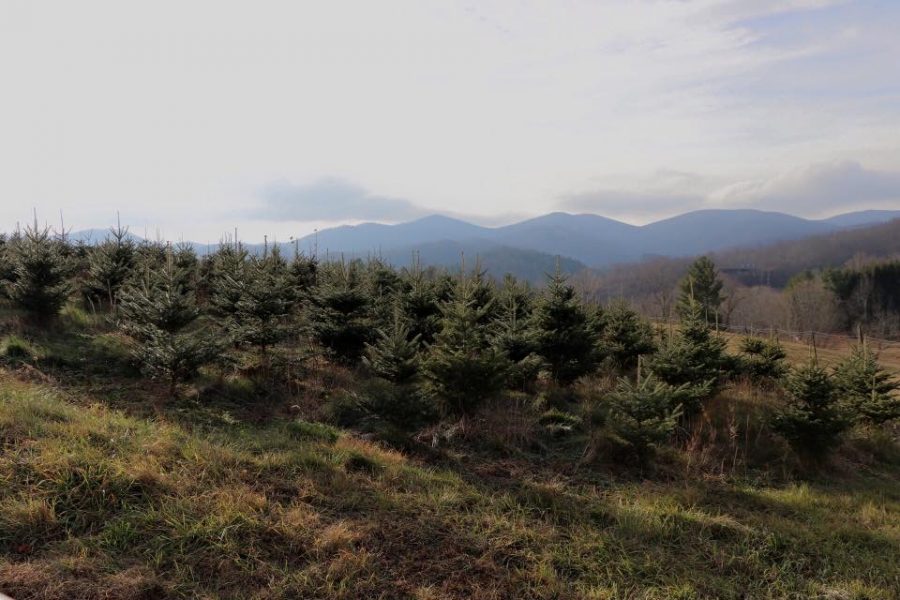Christmas Trees: History in the making
Growing on the side of the North Carolina mountains, these frasier fir are one of the nation’s most popular Christmas trees. The holiday season is upon us, and getting a Christmas tree is a tradition that no one can resist.
December 1, 2016
Many people believe that Christmas trees have always been associated with Christianity, when in actuality, Christianity was one of the last religions to jump on the bandwagon. Today, many religions have come to embrace the Christmas tree as one of the most recognized symbols of Christmas.
Winters were brutal in ancient times, so brutal that ancient Egyptians and Romans believed that their gods were struggling just as much as they were. Winter was seen as a time of death, and plants that remained green during this time, such as rushes, firs, and evergreens, were seen as holy. This was a sign that the gods would overcome the harsh winters and bring new life onto the earth. The Egyptians worshiped the sun god Ra. At the winter solstice, the shortest day of the year, the people of Egypt believed Ra had become ill, and they would decorate their homes with green rushes to symbolize his life over death. The Romans treated the solstice as a celebration by holding a feast called the Saturnalia in honor of Saturn, the god of agriculture. The Romans longed for Spring, knowing that soon everything would be green and lively once again. To celebrate the coming of Spring they would decorate their homes with evergreen boughs which is something that is commonly used to make wreaths, centerpieces, garland and other holiday decorations.
It was not until the 16th Century in Germany that the Christmas tree began to look as it does today. Christians would bring the trees into their homes, while others would build wooden Christmas pyramids that were decorated with evergreens and candles. Martin Luther is credited for being the first person to add lights to a Christmas tree. They say that as he walked through the night preparing a sermon for the church, he was in awe by the stars beneath the branches of the evergreens. To capture this moment for his family, he showed it to them by placing a tree in his home and attaching candles to it. The tradition kept growing, and the spread of Christmas trees flourished. The Christmas tree actually became popular in 1846, when British Royals, Queen Victoria and Prince Albert were drawn in a portrait with their family standing in front of a Christmas tree. Victoria was extremely popular, which made Christmas trees instantly one of the most wanted holiday items since the beginning of time. The 19th Century finally saw a rise in acceptance and popularity in the U.S. and the production of ornament to complement the tree became extremely popular during this time as well.
Everywhere around the world, Christmas is being celebrated and trees are being decorated, but everyone has their own unique and special way of creating holiday cheer. Junior Jonathan Underkoffler said, “I celebrate Christmas with my family by having our own traditions that we do every year, which includes trying to buy the biggest Christmas trees in the lot. We always buy a live tree and make cookies to celebrate the upcoming holiday.” Christmas trees have been a huge tradition for hundreds of years now and are only getting better. They are a great way to decorate your house and be jolly!












